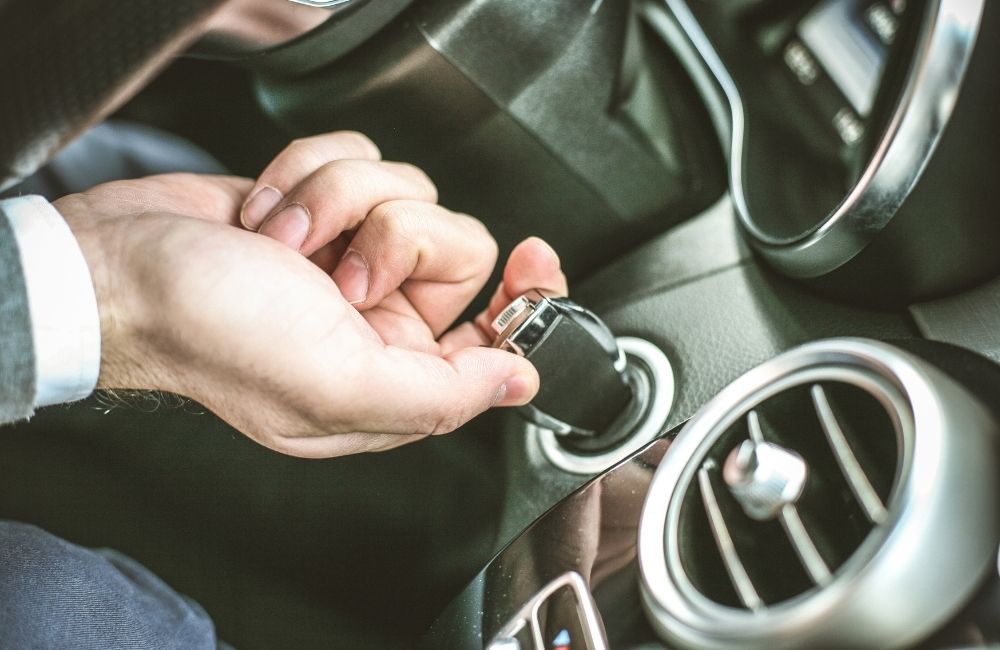Starting a car that has been sitting for months can sound really challenging. Whether it’s the pandemic that kept you off your car or you didn’t get a chance to drive it – leaving your car unused for a year affects its performance, and not to mention that it includes the inability to start the car safely.

Table of Contents
Here’s What Happens When You Don’t Drive Your Car For a Year
Cars serve a purpose and are designed to keep working, like many other machines. You must maintain a vehicle you don’t drive often; otherwise, the engine fluids will start breaking down. And unfortunately, your battery charge will die down as well, despite not starting your car.
As fluids and oils go stale, the parts that are not getting lubricants will start to erode. There is also a possibility of ants or rodents interfering with your car’s inactivity. When that happens, you might find your car’s chew or damaged parts of your seat cover.
Don’t forget the tires, which will start to lose the air gradually.
How To Start a Car That Has Been Sitting for One Year
Starting the engine after long storage will require quite some work, and it won’t always be straightforward. For this reason, I have some tips on how to make sure your car is ready to be driven again after it has been sitting for months.
#1 Replace oil in the engine
The oil level will likely be low, but the oil’s color and consistency will be different. If the oil looks thick and gritty, it’s a sign you need to replace your oil.
After complete oil and filter change, you should also drain any leftover gas in the tank. Make sure that you fill the oil to its required level. Don’t forget to fill your tires with air.
#2 Inspect the battery
Leaving your car for a year will drain the battery eventually, or the batteries will slowly lose their voltage.
If you wonder how to keep the car battery charged when not in use, you could use a trickle charger or voltage maintainer. You can also remove the batteries and store them safely away from moisture if you keep your car idle.
But in case you haven’t done that, you should consider buying new batteries and installing new cables.
#3 Check the exterior lights
Some of the important exterior parts of the vehicles are the lights – headlights, high-beam lights, fog lights, brake lights, reverse lights, and indicators.
Before you start your car again, and if you are thinking of driving them to the road, check these exterior parts and their functionality carefully beforehand.
#4 Check the gas
There’s a high chance you will need to drain your tank and refill it with fresh fuel. The gas in your tank will only wait for a month until it starts breaking down. When the gas degrades, it leaves a gummy residue in the fuel system.
If you plan to sit in your car for months, you can start using a fuel stabilizer. This way, your car can sit idle for up to 12 months without degradation.
#5 Prepare for ignition
Check the spark plugs, introduce them to some suitable lubricants. In case they look corroded, you will have to replace them despite their high price.
Mark the plugs before removing them, and grasp them at the closest point to the engine while pulling out. After this, turn on the engine many times so that the oil will lubricate the cylinder walls. You should do this enough times until the oil pressure gauge reads normal.
#6 Check the tires
Before attempting to take your car to the road, you should check the functionality of the car tires. Sometimes, even though your tires might look normal, you may feel the vibration through your steering wheel instead of a smooth process as you start driving. This indicates a flat spot in the tire, resulting from the car’s inactivity for an extended period.
#7 A trial
After checking everything mentioned above, it is time to ensure that your car is road-ready. Take your car out on a 20-minute drive. This will give you an insight into if everything is smooth and will evaporate the unnecessary moisture in the exhaust and the engine.
You will also learn about any issues it might have, including any rattles, engine misses, abnormal battery charging, abnormal temperatures, or oil pressures.
FAQs
How long can a car sit before its batteries die?
Your car will most likely wait two months before the charge of the battery starts draining. A car sitting for a year will most likely need a battery replacement unless you have removed and disconnected them before leaving your car in inactivity.
How to get a car running after sitting for years?
If you haven’t started your car in years, you should get help from a professional for advice.
Why won’t the car start after sitting for months or years?
Cars are machines and are designed to keep working. Keeping them inactive for a long time affects the car parts and their functionality.
Over to you…
There can be some issues, which require a professional mechanic to fix and DIYing them can make the condition of your car worse. If you haven’t been able to start your car by following the above tips, consider getting professional help for your car. Choose a service that doesn’t break the bank and offer a service warranty along with great support.